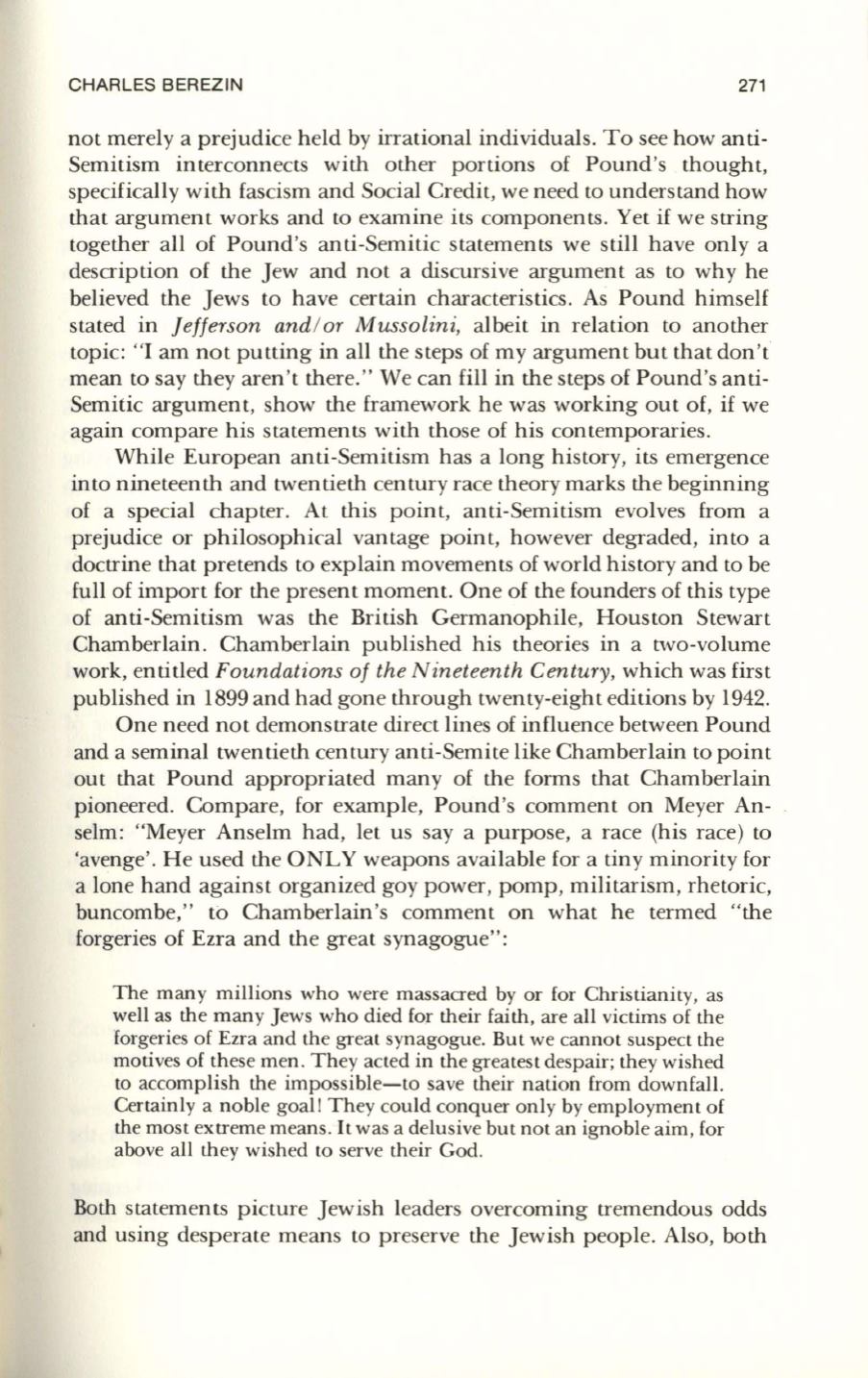
CHARLES BEREZIN
271
not merely a prejudice h eld by irrational individuals. To see how anti–
Semitism interconnects with other portions of Pound's thought,
specifically with fascism and Social Credit, we need to understand how
that argument works and to examine its components. Yet if we string
together all of Pound's anti-Semitic statements we still have only a
description of the Jew and not a discursive argument as to why he
believed the Jews to have certain characteristics. As Pound himself
stated in
Jefferson and / or Mussolini,
albeit in relation to another
topic: "I am not putting in all the steps of my argument but that don't
mean to say they aren't there." We can fill in the steps of Pound's anti–
Semitic argument, show the framework he was working out of, if we
again compare his statements with those of his contemporaries.
While European anti -Semitism has a long history, its emergence
into nineteenth and twentieth century race theory marks the beginning
of a special chapter. At this point, anti-Semitism evolves from a
prejudice or philosophical vantage point, however degraded, into a
doctrine that pretends to explain movements of world history and to be
full of import for the present moment. One of the founders of this type
of anti -Semitism was the British Germanophile, Houston Stewart
Chamberlain. Chamberlain published his theories in a two-volume
work, entitled
Foundations of the Nineteenth Century,
which was first
published in 1899 and had gone through twenty-eight editions by 1942.
One need not demonstrate direct lines of influence between Pound
and a seminal twentieth century anti-Semite like Chamberlain to point
out that Pound appropriated many of the forms that Chamberlain
pioneered. Compare, for example, Pound's comment on Meyer An–
selm: "Meyer Anselm had, let us say a purpose, a race (his race) to
'avenge'. He used the ONLY weapons available for a tiny minority for
a lone hand against organized goy power, pomp, militarism, rhetoric,
buncombe," to Chamberlain's comment on what he termed "the
forgeries of Ezra and the great synagogue":
The many millions who were massacred by or for Christianity, as
well as the many Jews who died for their faith, are all victims of the
forgeries of Ezra and the great synagogue. But we cannot suspect the
motives of these men. They acted in the greatest despair; they wished
to accomplish the impossible-to save their nation from downfall.
Certainly a noble goall They cou ld conquer only by employment of
the most extreme means.
It
was a delusive but not an ignoble aim, for
above all they wished to serve their God.
Both statements picture Jewish leaders overcoming tremendous odds
and using desperate means to preserve the Jewish people. Also, both


